Guppies are one of the most beloved species in freshwater fish-keeping. They are prized for their active personalities, beautiful colors/patterns, and hardy nature. For anyone just getting into fishkeeping – or just looking for an easy, great looking fish – I highly recommend looking into Guppies.
In this guide, we go through 14 of our favorite Guppy tank mates and explain a few of their care needs.
About Guppies
Guppies are one of the most widely kept species of freshwater aquarium fish. While originally native to South America, they can now be found in nearly every country. For those just starting out in fish-keeping, Guppies are a great option because of their hardy nature and low price tag.
Like many freshwater fish, Guppies exhibit sexual dimorphism – basically a fancy way of saying that males and females look dramatically different. Male Guppies are generally smaller and have beautiful, colorful fins. Females, on the other hand, aren’t as colorful (although selective breeding has helped brighten up their colors as well).
Guppies are a great community fish, meaning they get along with other species well. If you plan to keep you Guppies in a community tank, check out the section below that details a few of the best Guppy tank mates.
14 Compatible Guppy Tank Mates
Here our list of the 14 best tank mates for guppies:
Platies
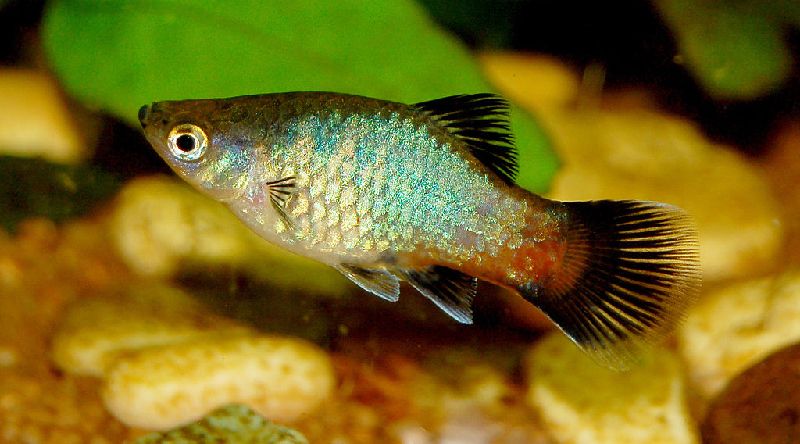
The Platy is a resilient freshwater aquarium fish made popular for their colorful appearance and ease of care. Much like Guppies, Platies are livebearing fish and reproduce in home aquariums quite often. This species also comes in many different colors and varieties, so every aquarium owner is sure to find a type they like.
Platies are peaceful and tend to thrive in a wide range of environments – as a result, they make great Guppy tank mates. Be prepared, though – if you decide to keep Platies you will probably end up with a ton of baby fish (although if you’re keeping Guppies, you should be prepared for this anyway). Platies are strong eaters and do well on a mixture of flake food and freeze dried bloodworms.
- Compatibility Rank: 10/10
- Care Level: Easy
- Required Tank Size: 20 Gallons
Swordtails
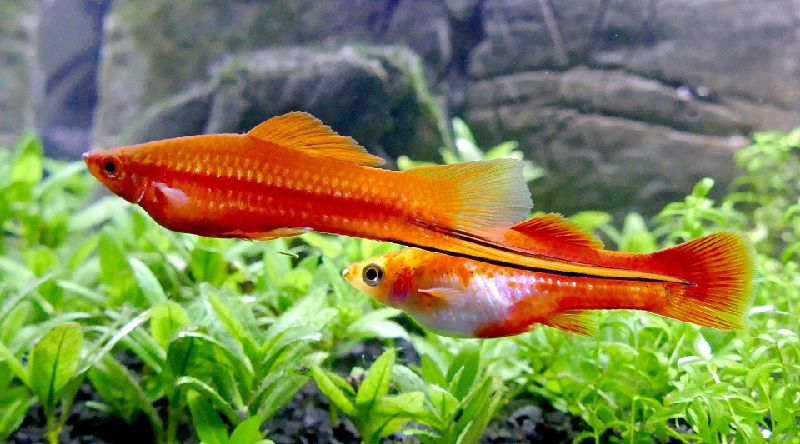
If you’re on the search for a great community fish, Swordtails are pretty hard to beat. They have a great temperament, get along with most other freshwater species, and add quite the unique look to any aquarium. Like Guppies and Platies, Swordtails are a livebearing species and will breed often if both males and females are present.
In addition, Swordtails are about as simple as they come in terms of care – they are adaptable and forgiving when it comes to water conditions. For aquarium owners looking for easy-to-keep guppy tank mates, Swordtails are a great choice.
- Compatibility Rank: 10/10
- Care Level: Easy
- Required Tank Size: 20 Gallons
Mollies
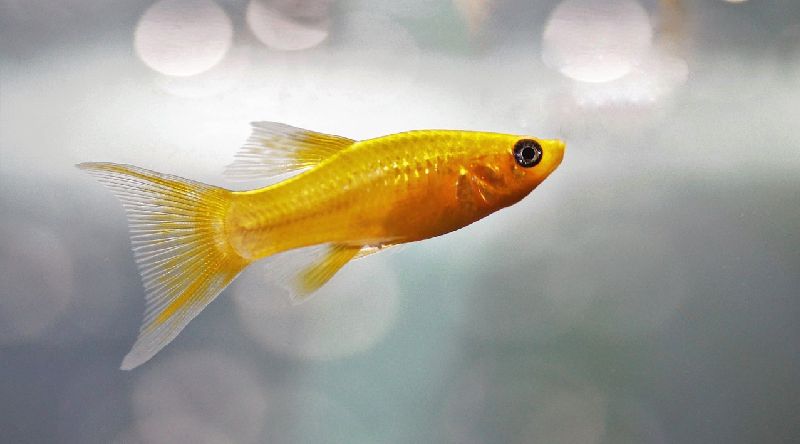
Mollies a small, versatile freshwater fish popular among beginner aquarium owners. This species is known for being extremely hardy, and can survive in both freshwater and saltwater environments (crazy, right?). Like Guppies, Mollies are a livebearing species and will reproduce quickly in home aquariums.
Mollies make great Guppy tank mates because they are peaceful, easy to keep, and remain fairly small. Since they are somewhat similar to Guppies and thrive in the same type of environment, they often co-exist without problems. If you’re looking for something peaceful and easy to keep, Mollies are a great choice.
- Compatibility Rank: 10/10
- Care Level: Easy
- Required Tank Size: 20 Gallons
Honey Gouramis
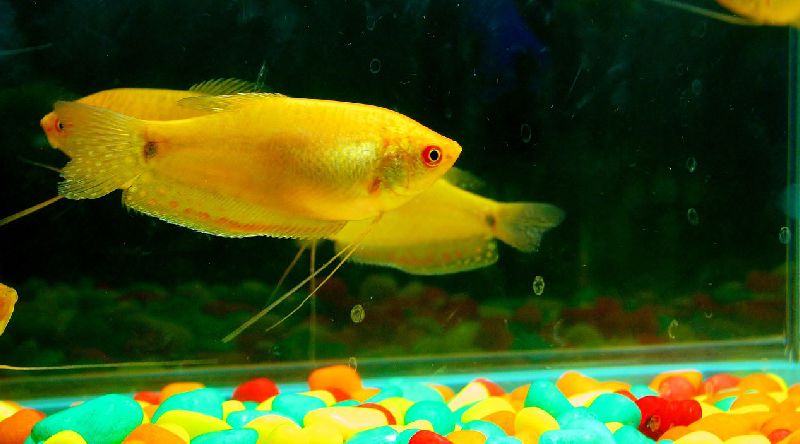
If you’re a little more experienced or looking for something slightly more advanced than livebearers, Honey Gouramis make for a great choice. That said, they require more specific care than other Guppy tank mates on our list.
To begin, Honey Gourami require planted tanks with lots of shade and adequate hiding places. Floating pants are often used in Gourami tanks to create a shaded, natural environment (almond leaves are also a great option and have tons of natural benefits). In addition to their specific tank requirements, Honey Gourami are very social fish and should always be kept in groups of 4-6. For aquarists with smaller tanks, this fact alone can knock this species off of your list.
Overall, Honey Gourami can make amazing tank mates for Guppies as long as you’re willing to keep up with their care needs. Although they might not be the easiest fish on our list, Honey Gourami are fun to keep, well tempered, and add great life to any aquarium they inhabit.
- Compatibility Rank: 8/10
- Care Level: Hard
- Required Tank Size: 20 Gallons
Cory Catfish
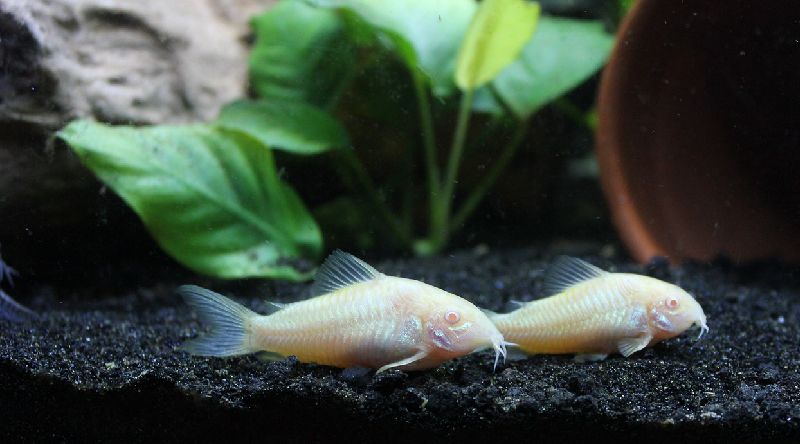
If you have read other articles on my blog, you probably know that I’m a huge fun of Cory Catfish. They are one of the most peaceful species of freshwater aquarium fish and are simply awesome to keep. They get along with just about every other species, so it comes as no surprise that Cories make great guppy tank mates as well.
If you plan to keep Cory Catfish, make sure you set up your tank with a sand substrate. Unfortunately, gravel is too course for Cories and can damage their fins and barbels. I recommend CaribSea Super Naturals Sand.
- Compatibility Rank: 10/10
- Care Level: Easy
- Required Tank Size: 20 Gallons
Harlequin Rasboras
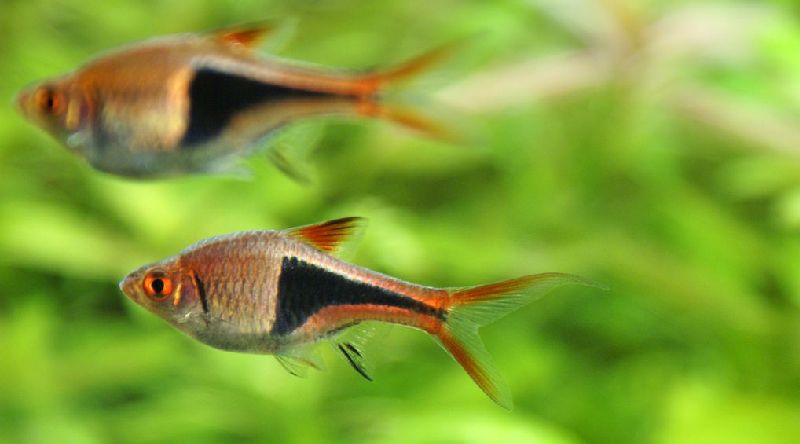
Harlequin Rasboras are one of my all-time favorite freshwater aquarium fish. Their lively nature, ease of care, and golden-bronze metallic coloration make them showstoppers for any aquarium – especially when kept in large schools. As a schooling fish, Harlequin Rasboras should be kept in groups of 8-12 and do best in planted tanks. If kept in groups smaller than 3 or 4, Harlequin Rasboras can become timid and stressed.
Because of their peaceful nature, Harlequin Rasboras make great Guppy tank mates (and great community fish in general). Although they usually reside in the same water layer as Guppies, you shouldn’t experience any aggression between the two species.
Because of their small size, Harlequin Rasboras might have a hard time eating large pellets. I had great luck feeding my rasboras Hikari Micro Pellets and crushed up flakes.
- Compatibility Rank: 10/10
- Care Level: Easy
- Required Tank Size: 20 Gallons
Bristlenose Pleco
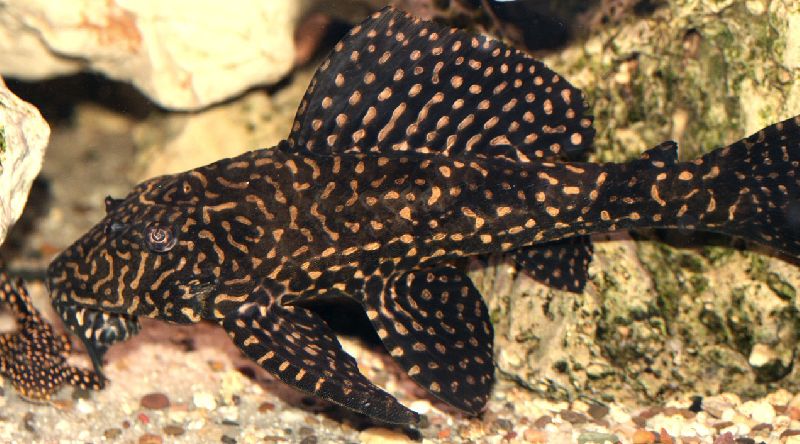
I usually don’t recommend Plecos for beginner fishkeepers (since they typically get way too large) – that said, the Bristlenose variety stays small enough to be kept in tanks around 25-30 gallons. If you don’t mind splurging for a tank within this size range, Bristlenose Plecos make amazing tank mates for Guppies.
Bristlenose Plecos will stay on your tank bottom 95% of the time, scavenging for food and snacking on tasty algae. Since they reside in a different part of the tank than Guppies (who generally swim mid tank), the two will mostly stay out of each others way.
In addition to being great tank mates, a Bristlenose Pleco will also help keep your tank clean by feeding on overgrown algae and uneaten food. That said, Plecos can’t survive on algae and leftovers alone. I suggest throwing in a few algae wafers once in a while to keep your Bristlenose happy and healthy.
- Compatibility Rank: 10/10
- Care Level: Easy
- Required Tank Size: 30 Gallons
Cardinal Tetra
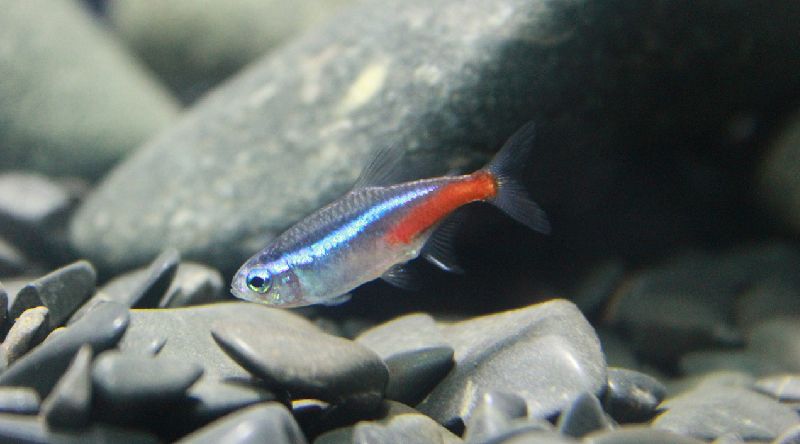
A close cousin of the Neon Tetra, the Cardinal Tetra is a small, colorful species made popular for their lively nature and interesting schooling habits. Although small and seemingly fragile, Cardinal Tetras are actually simple to care for and easy to feed (although they do best on a mixture of high quality flakes and freeze dried Blood Worms).
As a schooling species, Cardinal Tetras should be kept in groups of 7 or more – tanks 30+ gallons are capable of supporting upwards of 15-20 Cardinals. Large schools are awesome to watch, especially when combined with Guppies!
A quick word of caution: Cardinal Tetras will probably make a quick snack of Guppy fry if your tank doesn’t have enough hiding spots. If you don’t plan on raising the fry, this shouldn’t be a problem. If you do, make sure to remove the fry early or provide a lot of live plants as cover.
- Compatibility Rank: 9/10
- Care Level: Easy
- Required Tank Size: 30 Gallons
Otocinclus Catfish
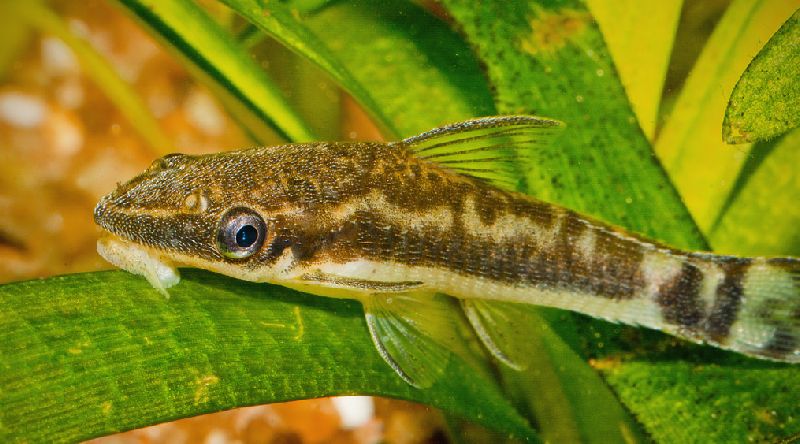
Otocinclus Catfish (commonly known at Oto Catfish) are one of the most beloved species in freshwater fish-keeping. Mild tempered and relatively shy, Oto Catfish love habitats with tons of live plants and driftwood to use as hiding places. Like Cories, Oto Cats prefer to be kept in small groups – 3 or 4 individuals seems to be the magic number.
Besides their docile nature, many aquarists love Otocinclus Catfish for their insatiable appetite for algae. Although small, a group of Otos can clean out a tank full of algae in only a few days. That said, I highly suggest supplemental feedings of algae wafers to make sure they’re getting enough nutrition.
Compared to other species on this list, Oto Catfish can be a little more sensitive to sub-par water conditions. I recommend letting your tank mature for a few months before adding these delicate catfish. In addition, make sure you keep an eye on your Guppies – although you shouldn’t experience any aggression, Guppies are know to be nippy once in a while.
- Compatibility Rank: 9/10
- Care Level: Moderate
- Required Tank Size: 20 Gallons
Kuhli Loach
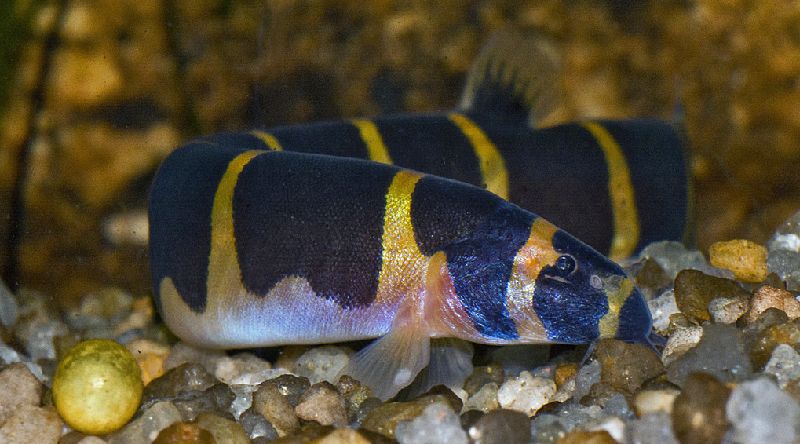
This unique, eel-like species is one of the most interest freshwater fish out there. If you’re looking for something a little different, the Kuhli Loach is a great choice. Despite their unique look, Kuhli Loaches are actually very peaceful and get along with tons of other freshwater species (especially Guppies!). Like a few other species on our list, Kuhli Loaches prefer to be kept in small groups of 3-5 individuals. That said, they remain pretty small at just 3-4 inches, so maintaining a group is possible in tanks as small as 20 gallons.
The optimal habitat for the Kuhli Loach contains lots of live plants, driftwood, and a sand substrate (pool filter sand works well). Like Cory Catfish, rough or rocky substrates can damage the fins and stomach of the delicate Kuhli Loach.
Since Kuhli Loaches are naturally nocturnal, don’t be surprised if you don’t see them for the first few days. As these fish adjust to your tank, they will be more comfortable feeding and socializing during daylight hours.
- Compatibility Rank: 9/10
- Care Level: Moderate
- Required Tank Size: 20 Gallons
Nerite Snails
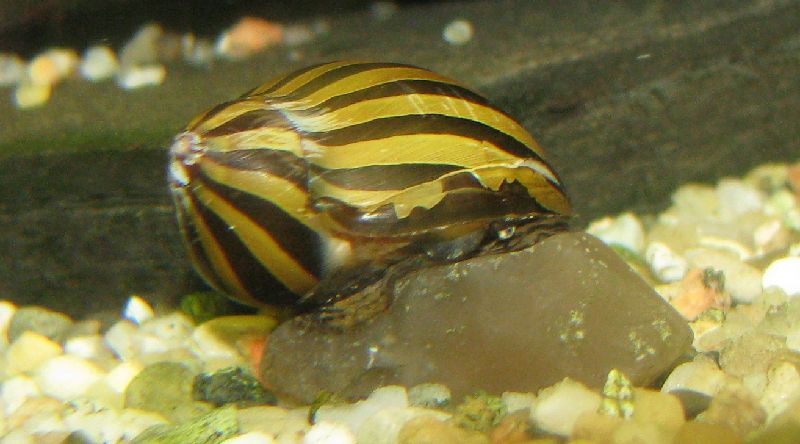
Who said that all of the Guppy tank mates on our list have to be fish? As one of the most popular freshwater aquarium snails, Nerites are prized for their docile nature and incredible algae-eating capabilities. In fact, they are widely regarded as the best algae-eating snail species out there – they can tackle a tank full of algae like nobody’s business.
Nerite Snails are 100% safe to keep with Guppies (which surprisingly can’t be said for all snail species) and won’t bother live plants. In addition, they require saltwater to reproduce, so you won’t have to worry about them taking over your tank (this is a common problem with other snail species since they tend to breed rapidly).
Overall, Nerite Snails are a great, low-cost option for aquarists looking to put together a clean up crew.
- Compatibility Rank: 9/10
- Care Level: Easy
- Required Tank Size: 10 Gallons
Red Cherry Shrimp
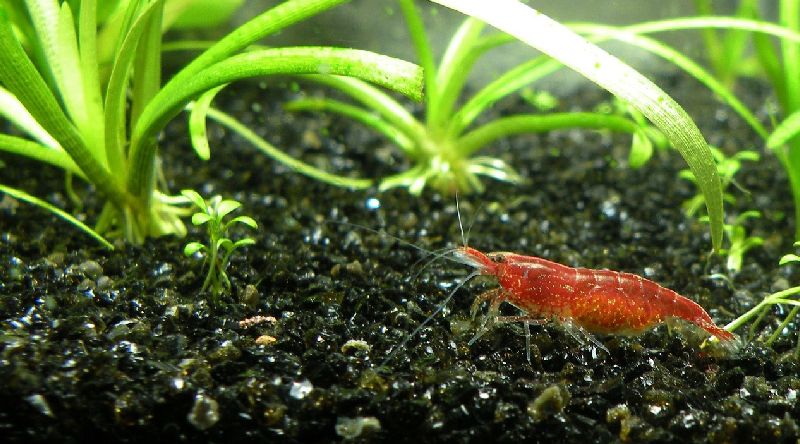
Looking to venture past fish? If so, I would definitely recommend considering Red Cherry Shrimp. These bright colored dwarf shrimp are beautiful and easy to keep, making them a great option for beginner and experienced aquarists alike.
Although I generally don’t recommend mixing shrimp and fish (the shrimp tend to end up as food), I have had some success keeping them with Guppies. That said, newborn Red Cherry Shrimp will probably be eaten up by your Guppies fairly quickly – which might be a good thing considering how fast Red Cherries tend to breed.
If you plan to keep shrimp with your Guppies, make sure you give them places to hide. Live plants such as Java Moss and Java Fern work well. In addition, remember to keep you Guppies well fed.
A word of caution: Keeping shrimp with any type of fish (even Guppies) carries risk. Since every Guppy is different, your shrimp might end up as an unfortunate snack – just keep this in mind!
- Compatibility Rank: 6/10
- Care Level: Moderate
- Required Tank Size: 10 Gallons
Crystal Red Shrimp
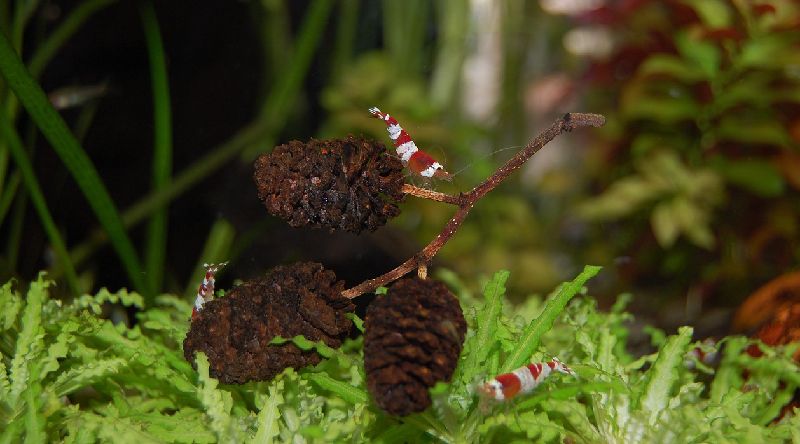
Crystal Red Shrimp are another widely popular species of freshwater aquarium shrimp, made famous for their unique red a white patterns.
Much of what we wrote about Red Cherry Shrimp also applies to Crystal Reds. That said, they tend to be a little harder to care for. Once again, be very careful when keeping Crystal Red Shrimp with any type of fish, even Guppies. Refer to our “word of caution” above.
- Compatibility Rank: 5/10
- Care Level: Moderate
- Required Tank Size: 20 Gallons
African Dwarf Frog
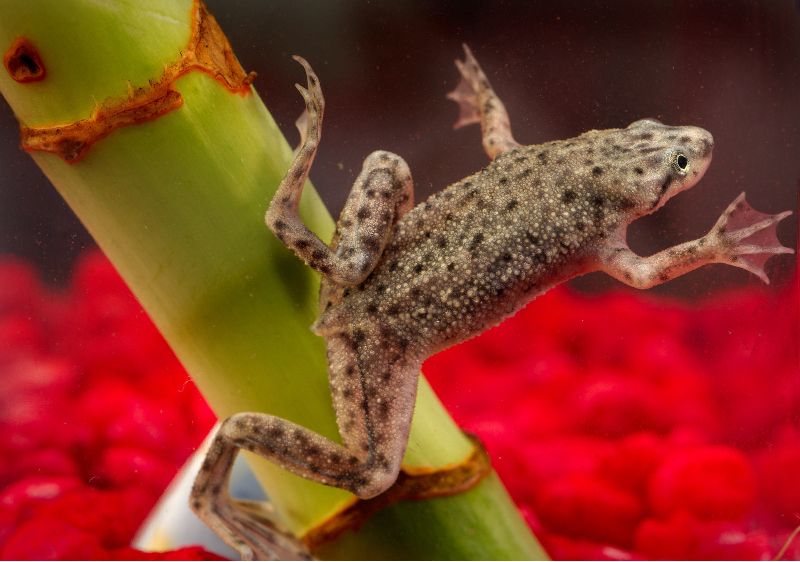
If you’re really looking to switch things up, an African Dwarf Frog can make a great addition to any Guppy tank. Although they’re a little sensitive to water condition, ADFs cohabitate well with small fish. Since African Dwarf Frogs hang out at the bottom and Guppies stay toward the top, the two species shouldn’t bother each other too much.
One thing to note about keeping ADFs with fish, especially Guppies, is that feeding time can be a little tricky. Since African Dwarf Frogs are slow eaters, Guppies tend to consume all the food before the frog can find anything. As a result, spot feeding your ADF with tweezers may be necessary. If this sounds like too much work, you’re probably better off going with one of our other suggestions above.
- Compatibility Rank: 5/10
- Care Level: Moderate
- Required Tank Size: 10 Gallons
Species to Avoid
Here are a few fish that are probably best to avoid keeping with your Guppies:
Angelfish
As much as I love Angelfish, they definitely don’t make the best tank mates for guppies (despite when some other guides might tell you). These two species will be fine together as long as the Angelfish are small – larger Angelfish will probably see Guppies as an easy snack.
If you’re set on keeping Angelfish, I would recommend some larger tank mates such as Cory Catfish, Bristenose Plecos, Swordtails, or Mollies.
Note: Many people have had success keeping Angelfish with Guppies (and sometimes it works out perfectly) – just be prepared, there is always a chance that the Guppies will “mysteriously” dissappear.
Cichlids
This one is kind of self explanatory – cichlids tend to be aggressive, quick, and have quite the appetite for small fish. For most cichlids, Guppies will look a lot more like food than anything resembling a “tank mate”.
In addition, cichlids tend to be pretty territorial. They stake out a spot in the tank and claim it as their own. Guppies, with their lively and energetic nature, love to swim laps around the tank – which means they will usually end up swimming into cichlid territory and, well…you know.
Endler’s Livebearers
Guppies and Endler’s Livebearers get along great, so why aren’t they considered good tank mates? Well…they actually get along a little too great.
Guppies and Endlers are known to crossbreed, which is something that you always want to avoid in the fish-keeping hobby. Crossbreeding usually results in weak offspring that end up with health problems. In addition, true Endlers are very rare in the wild – if you have a pure line of wild Endlers, it would be a shame to mess that up by letting them crossbreed.
Anything else large enough to eat them
In general, Guppies tend to make great tank mates of a lot of different species – that said, their small size makes them vulnerable to just about any type of fish with a big enough mouth. Just be sure to avoid large and aggressive species.
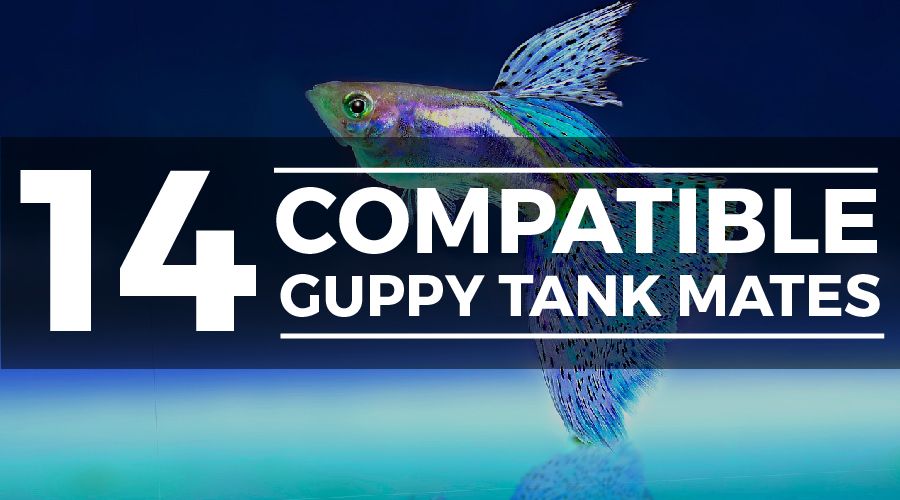


I don’t know if anyone else has tried this, but I had a few turquoise rainbow fish in with my guppies and tetras (neon and glow light). The rainbows didn’t even pay attention to the smaller fish.
thank you for this great list of fish for guppies. I have a 10 gallon Aquarian. I currently have 6 male guppies and am looking for something to go along with them. I now know what to avoid. Which is which is what I was looking to find. I am fairly new to fish tanks, last time I had one was about 30+ yrs ago. Back then it was gold fish and guppies. I learned real quick to avoid both male and females in one tank.
Good information all about Guppy lovers😍.. very usefull infos.. Thanq… 👏
Wow!!! Thank whom ever put this together!!! Lots of great information!!! Ivy been doing guppies for about three years now… and every day is a new learning experience.
When I have a question this is THE place for answers!!!